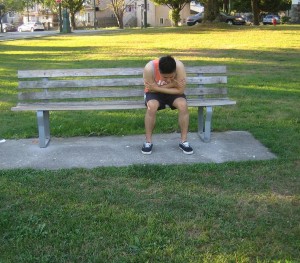Benign paroxysmal positional vertigo is a disorder affecting the inner ear where positional changes of the head can lead to sudden vertigo. This is a feeling that the room is spinning. The condition tends to vary in intensity from minor to severe and generally lasts for only a few minutes.
Some of the symptoms that might be present include:
- Lightheadedness
- Dizziness
- Nausea
- Vomiting
- Feeling of imbalance
BPPV is not an indication of a serious condition and eventually settles on its own within 6 weeks of the initial episode. Nevertheless, the symptoms can be daunting and might be dangerous especially among the elderly. The unsteadiness linked with the condition can lead to falls.

What are the causes?
Benign paroxysmal positional vertigo develops once calcium carbonate crystals (otoconia) move into and end up trapped inside the semicircular canals. Take note that the otoconia makes up a normal part of the structure of the utricle which is a vestibular organ close to the semicircular canals.
The otoconia might be loosened due to infection, injury or age and land in the utricle where it naturally dissolves. Nevertheless, if it lands in the semicircular canals, it will not dissolve. When the individual changes the position of the head, the otoconia starts to roll around and push on the small hairs lining the semicircular canals. These hairs serve as sensors to provide the brain with information about balance.
What are the triggers?
The activities that can start an occurrence of benign paroxysmal positional vertigo include:
- Sitting up in the bed
- Rolling over
- Moving the head forward to look down
- Tipping the head to the rear
In most cases, only one ear is affected but both can be involved in some occasions.
Management of benign paroxysmal positional vertigo
With the advancements in the field of medicine, benign paroxysmal positional vertigo can be readily diagnosed and treated.
A diagnosis is generally made in the clinic based on the medical history and physical examination. In most cases, the treatment involves a short simple procedure called as the particle repositioning maneuver.
This procedure is effective in managing around 80-90% of cases. Additional exercise or repositioning maneuvers might be required if the symptoms persist.
